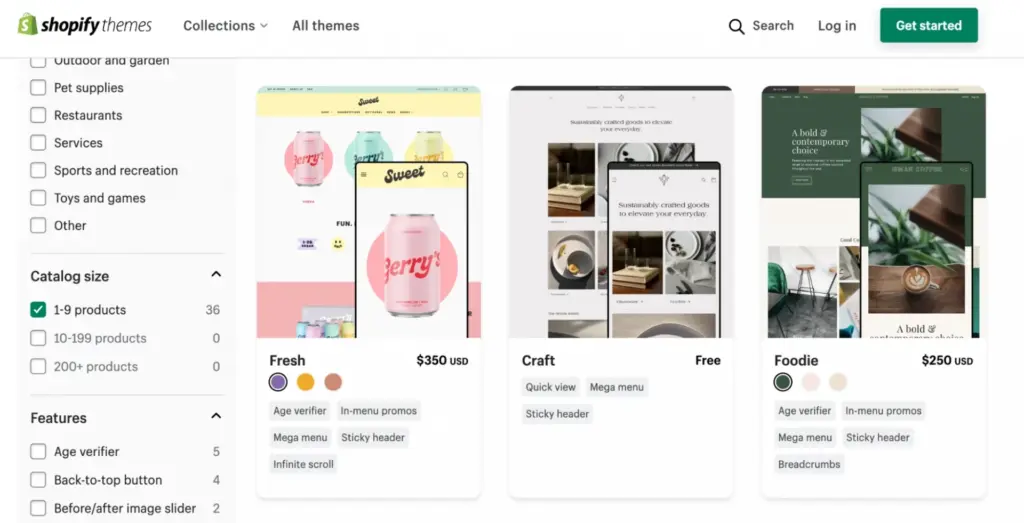Welcome to the cutting edge of eCommerce growth strategies, where even the smallest customer actions, dubbed “microconversions,” can create ripples leading to significant business successes. In this week’s edition of “The Checkout Point by Blikket.co,” we’re diving into how these tiny yet impactful steps taken by your customers can pave the way for substantial enhancements in your business metrics.
Your usual hosts, Max and Rachel, come to you with their usual zest (and an extra shot of caffeine!), ready to unpack a treasure trove of the latest eCommerce insights. This episode is particularly thrilling as it opens up with a deep dive into the concept of microconversions in eCommerce. What might seem like minor actions—like signing up for a newsletter, adding a product to a wishlist, or even spending a tad longer on a product page—can be pivotal in boosting your eCommerce strategy.
If you’re intrigued by how seemingly insignificant actions can lead to major outcomes, then you’re in the right place. From exploring real-life success stories that hinge on microconversions to discussing the latest industry shifts and innovative strategies, today’s episode is designed to equip you with the knowledge to transform these micro-moments into monumental growth opportunities for your business.
Join us as we unpack how each segment of a user’s journey can be optimized to not only increase engagement but also drive conversions that influence the bottom line significantly. So, grab your preferred beverage and settle in as we explore these fascinating dynamics in today’s episode of The Checkout Point. It’s not just informative—it’s crucial for anyone looking to leverage the nuanced art of conversion in today’s competitive market.

Microconversions: The Untapped Potential in eCommerce
When discussing the backbone of eCommerce success, the spotlight typically shines on the major endgame: the sale. However, what if the secret to significantly boosting your online sales lies in the subtle, often-overlooked actions customers take before they even hit that final “Buy Now” button? This is the realm of microconversions, a critical but underutilized factor in eCommerce strategies.
Understanding Microconversions
Microconversions are small but meaningful actions that users perform on your website, which cumulatively lead towards a purchase. These can range from users updating quantities in their shopping carts to interacting with product reviews. Such actions may not immediately culminate in a sale, but they guide potential customers along the buying journey, influencing their final decision.
Why Focus on Microconversions?
The true value of microconversions lies in their ability to provide insights into customer behaviors and preferences. By examining these small interactions, businesses can glean insights into where customers might be facing issues or what convinces them to make a purchase. This data is gold for any eCommerce manager aiming to refine the shopping experience and increase conversion rates.

Optimizing the eCommerce Experience
An effective approach to enhancing microconversions is to make the path to purchase as seamless as possible. This could involve making customer reviews more visible to reassure potential buyers or simplifying the checkout process to prevent cart abandonment. Each microconversion optimized is a step closer to not just a sale, but a satisfied customer.
Moreover, it’s essential to set up the right kind of analytics to track these subtle yet significant metrics. Not only does this help in identifying the most impactful microconversions, but it also empowers teams to make informed decisions that can lead to better customer retention and increased sales.
Actionable Strategies for Immediate Results
The beauty of focusing on microconversions is that the adjustments required are often straightforward and actionable. For instance, enhancing the visibility of product reviews or streamlining the navigation can dramatically improve the user experience, and subsequently, your conversion rates.
According to the insights gathered in “Unlock Hidden Growth: Boost eCommerce with Microconversions”, implementing these strategies not only paves the way for the big wins—those dramatic increases in conversion rates—but also ensures a stable foundation of customer trust and satisfaction.
Final Thoughts
Incorporating microconversions into your eCommerce strategy isn’t just about recognizing the importance of these small wins; it’s about fully leveraging them to foster a deeper understanding of your customer’s journey. Every microconversion optimized is a step toward not just achieving a sale, but building a long-lasting relationship with your customers. Whether you’re just starting out or looking to scale up, enhancing your focus on microconversions could very well be the game-changer in your eCommerce success story.
Ready to dive deeper into this topic? Don’t miss out on the full discussion over at Blikket.co, where you’ll find more detailed strategies and real-life case studies that illustrate the powerful impact of optimizing for microconversions.
Microconversions in eCommerce: Enhancing User Experience with Smart Partnerships
The recent partnership between Shopify and Akeneo is a big step in how eCommerce platforms enhance user experience and facilitate better product management. For eCommerce merchants, managing intricate details of numerous products can be overwhelming. This collaboration aims to simplify these complexities, transforming the way online stores operate and greatly enhancing the efficiency of handling product information.
Shopify and Akeneo: A Game-Changing Alliance
Understanding the significance of microconversions in the eCommerce space, Shopify’s strategic partnership with Akeneo focuses on revamping the product experience on their platform. Akeneo, a leader in Product Information Management (PIM) systems, brings its expertise to help merchants effortlessly manage and optimize their product details. This integration means smoother workflows for store owners, leading to an improved customer journey on the digital storefront.
This collaboration is akin to a tactical play in a football game. If Shopify is the quarterback, then Akeneo is the running back, adeptly managing the product details handed off by Shopify. This setup not only ensures that product information is more organized and accessible but also boosts the efficiency of microconversions crucial for eCommerce success. Every detail fine-tuned in the product management process can potentially convert browsers into buyers.

Tapping into Trending Markets
In addition to optimizing product experience, staying attuned to market trends is crucial for eCommerce success. The recent Shopify report on trending products by 2025 highlights significant shifts, like the rising demand for eco-friendly products. This insight is invaluable for merchants looking to align their offerings with consumer expectations and market demands.
By understanding these trends and leveraging robust tools like the Shopify-Akeneo partnership, eCommerce platforms can adapt more swiftly and efficiently, staying ahead in a competitive market. This approach not only supports the operational aspects of an eCommerce business but also enhances strategic decisions related to product offerings and market positioning.
Indeed, the eCommerce landscape is continually evolving, with advancements like these playing a pivotal role in shaping the future of online shopping. By focusing on every element of the user experience, from product discovery to information management, businesses can maximize microconversions—those small yet impactful interactions that collectively drive eCommerce success.
Conclusion
Microconversions in eCommerce are about understanding and optimizing the myriad of small interactions users have with your site. The Shopify and Akeneo partnership exemplifies how technological integrations can streamline these interactions, leading to better customer experiences and elevated sales. It’s these smart, strategic partnerships in the eCommerce world that make the journey of digital selling fascinating and fruitful.
Understanding Microconversions in eCommerce
The eCommerce landscape buzzes with strategies and innovations, particularly when tackling challenges like tariff costs during significant sales events. Instead of buckling under pressure, retailers are creatively adapting by absorbing costs or tweaking prices slightly. This energetic evolution in retail strategies helps maintain customer satisfaction and sales velocity – essential fuel for the ongoing retail festivities akin to July’s high-stakes sales environment (source).
But let’s shift gears to where these strategies take on a digital avatar. Today, eCommerce isn’t just about being online; it’s about thriving online. Through enhancing site usability and design, retailers are focusing on microconversions – small but significant actions taken by visitors that lead to the overall success of online businesses. These can range from a newsletter signup to a user adding an item to their cart. Each of these actions, although seemingly minor, are pivotal in funneling potential customers closer to the main goal: making a purchase.
As unveiled in a discussion shared on Cisco’s blog, one core component enhancing these microinteractions is a finely-tweaked UX design (source). Simple modifications can significantly differentiate a digital storefront. The design isn’t just about aesthetics; it’s a crucial element that guides visitors through the buying journey seamlessly, boosting microconversions at each step.
Looking into the near future, another transformation in eCommerce comes from technological advancements, specifically in B2B segments. By 2025, eCommerce apps are expected to feature personalized dashboards and integrated AI support, setting the stage not only for enhanced user interaction but for smarter, data-driven business decisions (source). These tools will not only monitor inventory but anticipate market trends, promoting efficient stock management and proactive engagement strategies.
This convergence of design and technology propels eCommerce from mere transactions to creating rich, interactive experiences, ensuring that each customer’s journey is both engaging and personally tailored. Such a focus on microconversions, through seamless design and smart technology, paves the way for businesses not just to survive but to thrive in the competitive digital landscape.

Key Takeaway for eCommerce Marketers
In the dynamic world of eCommerce, understanding and optimizing microconversions are as essential as overarching sales strategies. Each small step a user takes towards buying is a part of a larger, intricate dance of digital interactions – a dance where the rhythm is set by seamless design and intuitive technology. So, whether it’s tweaking a button color, enhancing landing page design, or integrating predictive analytics, focusing on these finer details can significantly boost your conversion rates, one microinteraction at a time.
Unlocking the Potential of Microconversions in E-Commerce
As we delve into the intricacies of e-commerce growth, an overarching theme has emerged: it’s not merely about amplifying sales anymore but enhancing how these sales are attained. At the heart of this evolution are microconversions, those small yet crucial steps a customer takes before committing to a purchase. From signing up for a newsletter to adding items to a cart, each action is a valuable predictor of eventual sales.
Gen Z and Their Influence on E-Commerce Dynamics
Interestingly, a significant shift in consumer behavior, particularly among Gen Z shoppers, is influencing these microconversion strategies. This demographic isn’t just shopping; they are looking for an experience that aligns with their values — speed, efficiency, and sustainability. These preferences are pushing retailers to innovate relentlessly, transforming every small interaction into an opportunity for engagement and conversion.
How Microconversions Help Navigate E-Commerce Plateaus
While the FTI Consulting report suggests we may be nearing the peak of e-commerce growth, the focus has shifted from macro to micro. Understanding and optimizing these smaller conversions can reinvent the consumer journey fundamentally. By analyzing and enhancing various touchpoints where Gen Z interacts with brands, businesses can craft tailored experiences that not only attract but retain this pivotal market segment.
Integrating Microconversions with Business Goals
Moreover, companies that view logistical challenges as opportunities to embed sustainability within their core operations are likely to resonate more with contemporary consumers. As indicated by ongoing demands for greener logistics in e-commerce, these micro-adjustments in operations can lead to significant competitive advantages, ensuring businesses stay relevant in a rapidly evolving marketplace.
The Larger Picture of E-Commerce Trends
While microconversions focus on the minute interactions, their impact travels far beyond these small gestures. They are about creating a cohesive and engaging narrative that reflects the new e-commerce landscape — driven by informed, tech-savvy consumers who desire transparency and responsiveness from brands. Keeping an eye on these trends is not just about observing changes but actively participating in shaping the e-commerce of tomorrow.
Finally, as the logistics of e-commerce continue to evolve under the weight of consumer expectations and technological advancements, embracing microconversions might well be the strategic pivot that keeps the e-commerce giants in the game, turning potential stagnation into renewed growth opportunities.
Thus, in the puzzle of e-commerce, understanding and leveraging these microconversions could very much turn out to be the critical pieces needed for a winning strategy, ensuring businesses not only survive but thrive in this dynamic digital marketplace.
Embracing Microconversions in eCommerce: The AI Influence
Amidst the sparkling updates from the eCommerce sector, a pivotal shift is happening, one that might just redefine the shopping experience thanks to artificial intelligence. The recent rollout by OpenAI, introducing new AI tools for retailers like Shopify, is a game changer, heralding a new era of personalized online shopping assistants.

Why Microconversions Matter
Microconversions, often overlooked in the shadow of final sales, can significantly indicate customer engagement and satisfaction. As these AI assistants become more embedded in the eCommerce landscape, their role in enhancing microconversions cannot be overstated. Imagine an online personal shopper, one that not only suggests products that align perfectly with your tastes but also remembers your preferences, improving with every interaction.
This level of tailored assistance is poised to boost several microconversion metrics, from increased page views per visit as shoppers explore recommended products, to enhanced newsletter sign-ups through targeted prompts. These subtle yet vital interactions aid in nudging the customer along the purchasing funnel, smoothly and efficiently.
Enhancing the Customer Journey with AI
According to this month’s Retail Technology News, integrating AI not only assists in shopping but also refines the entire consumer journey. This improvement is crucial in a digital landscape where customers crave swift, straightforward solutions, particularly when dealing with intricate transactions or product returns.
The use of AI to guide these processes can elevate the overall user experience, decreasing frustration and potentially boosting customer loyalty—a key outcome for any eCommerce business. Moreover, these seamless, AI-driven interactions are integral in converting single-time buyers into repeat customers, enhancing lifetime customer value through consistent, positive experiences.
With burgeoning technologies, the face of eCommerce is rapidly evolving. Shoppers are increasingly seeking out not just rapid solutions but personalized interactions, ones that feel as genuine and attentive as those in a physical store. As these AI systems learn and adapt, they could become indispensable tools in achieving higher microconversion rates, by making every small step in the customer journey feel noticed and valued.
Indeed, as we integrate more advanced AI capabilities, the blend of technology and personalized customer service might just be the recipe for not only meeting but exceeding customer expectations in the digital realm. While the balance between AI and the human element continues to be fine-tuned, this evolution in eCommerce could very well be the path to mastering microconversions, turning mundane interactions into extraordinary opportunities to captivate customers.
Looking Ahead
As eCommerce continues to adapt and grow with AI integrations, monitoring how these enhancements affect shopping behaviors and microconversion rates will be crucial. These insights will not only optimize the use of AI in real-time scenarios but will also guide future innovations in the sector. With AI at the helm, the possibilities for enhancing customer engagement and satisfaction through microconversions look more promising than ever.
Remember, in eCommerce, every little interaction counts, and with AI, these interactions are becoming smarter, smoother, and more impactful.
Unlocking the Power of Microconversions in eCommerce
In the bustling world of eCommerce, major sale events like Prime Day represent more than just a frenzy of spending; they also highlight an often-overlooked aspect of online shopping: the critical role of microconversions. As discussed on a recent episode of the Blikket Podcast, where the hosts marveled at Adobe’s projection of a whopping $24 billion in sales over four days, it becomes evident that understanding these subtle yet impactful customer interactions can be a game-changer for businesses, big and small alike.
What Are Microconversions?
Microconversions are those incremental steps a shopper takes before making the ultimate decision to purchase. These can range from signing up for a newsletter, adding a product to the cart, or even spending a certain amount of time on a product page. While these actions may seem minuscule compared to the final conversion of purchasing, they are pivotal in guiding potential customers through the sales funnel.
Why Focus on Microconversions?
- Enhanced Customer Insights: Each microconversion helps paint a clearer picture of consumer behavior. By analyzing these small actions, businesses can fine-tune their marketing strategies, optimize the user experience, and ultimately, increase conversions.
- Optimized User Journeys: Understanding and improving microconversions involves smoothing out any friction points in the user journey. This effort ensures that by the time a customer is ready to hit ‘buy’, they’ve had a seamless and engaging experience that is likely to encourage repeat business.
- Better Resource Allocation: Focusing on microconversions allows businesses to allocate their resources more effectively. Investing in the most impactful aspects of the customer journey can significantly boost ROI, especially for smaller players in the market who need to maximize every dollar spent.
In discussing the impact of high-traffic events like Prime Day, it’s crucial for smaller eCommerce businesses to harness these micro moments. As major players like Amazon draw immense crowds, the spillover effect can benefit smaller entities, but only if they’ve optimized their processes to capture and convert this additional traffic.

Leveraging Microconversions for Business Growth
With eCommerce predicted to continue growing robustly—a sentiment echoed by MarketBeat’s forecasts for e-commerce stocks—the potential for leveraging microconversions has never been greater. For businesses looking to ride the wave of eCommerce giants, it’s not just about launching promotions but about creating a compelling pathway through these small yet significant steps that lead to a purchase.
As our discussion rounds up, remembering the correlation between microconversions and customer trust becomes evident. Whether managing a crisis or managing an online shopping experience during high-stake sales events, the ability to nurture trust through each step of the customer’s journey is fundamental. As eCommerce evolves, understanding and enhancing microconversions might just be the detail that turns browsing into buying, significantly impacting a business’s bottom line.
The next time a prime shopping event occurs, keep an eye on not just the explosive growth in sales but also how effectively businesses are utilizing microconversions to amplify their success. It’s these small wins that accumulate into major triumphs, both during seasonal highs and in the everyday ebb and flow of eCommerce.
Reflecting on Microconversions and eCommerce Dynamics
As we wind down another insightful discussion on the latest in eCommerce, it becomes increasingly clear that the minutiae in customer interactions—those microconversions—play a monumental role in shaping the success of online businesses. This week’s revelations about enhancements in user experience and Shopify’s strategic decisions leave us pondering about the potential shifts in the eCommerce landscape.
What Are Microconversions in eCommerce?
In an era where every click could lead to a massive conversion, understanding and optimizing for microconversions can be the key to unlocking vast improvements in eCommerce performance. Microconversions involve the small, but significant, steps a user takes towards making a purchase, such as signing up for a newsletter, adding a product to a cart, or simply engaging more deeply with your content.
Why Focus on Microconversions?
- Enhanced User Engagement: Encouraging small actions keeps users engaged with your platform, boosting the chances of eventual large conversions.
- Improved Conversion Metrics: Tracking these tiny steps can provide insights into user behavior, helping to refine marketing strategies and improve overall conversion rates.
- Better ROI: Small tweaks leading to microconversions can often be implemented at a low cost, offering significant returns on investment by funneling users toward purchase points more effectively.
Engage and Innovate
As we step further into the year, and eCommerce continues to meld with cutting-edge technology and innovative marketing strategies, keep your focus on not just the end goal but also the small interactions that lead there. What can we learn from Shopify’s recent moves, or the increasing importance of UX in the purchase journey?
Now, We Turn to You…
How are you leveraging microconversions to boost your eCommerce business? Are there specific strategies that have worked wonders, or perhaps some that didn’t live up to expectations? Have you noticed shifts in consumer behavior as you enhance elements of your UX?
We encourage you to dive into these questions and share your experiences. Your insights not only enrich your peers but also shape the future discussions we’ll have here at The Checkout Point.
Excited for more? Join us again next week where we’ll continue to explore the fascinating world of eCommerce innovations. Remember, each small interaction on your site could be the gateway to substantial growth. Let’s make the most of every opportunity, one microconversion at a time!
Until next time, keep experimenting and optimizing, and as always—stay curious!










